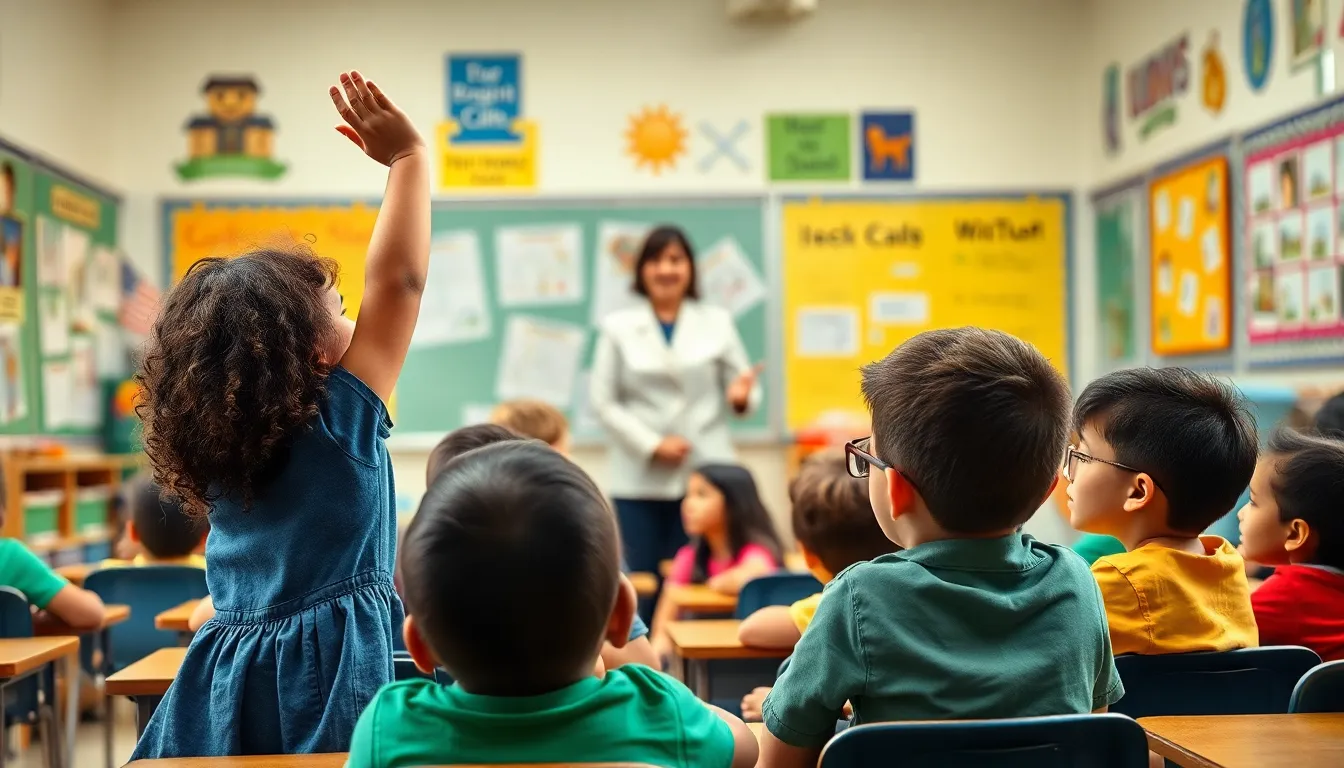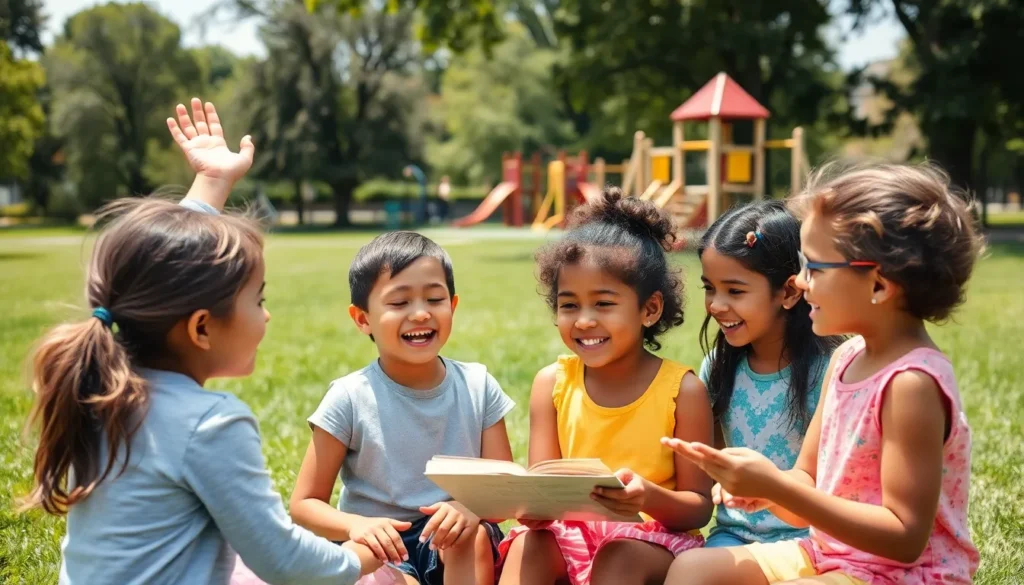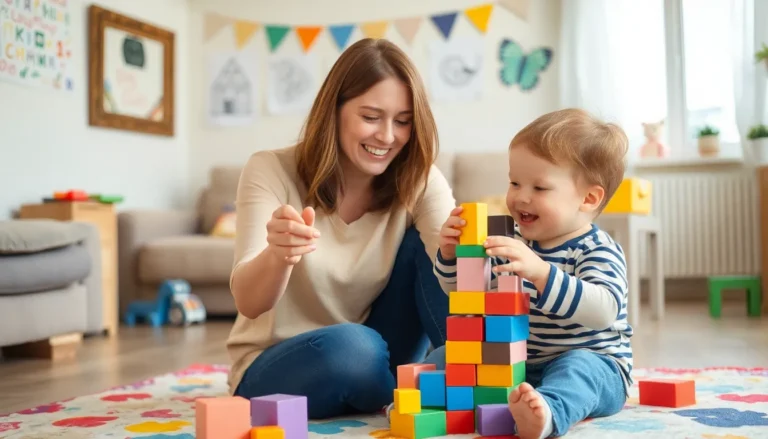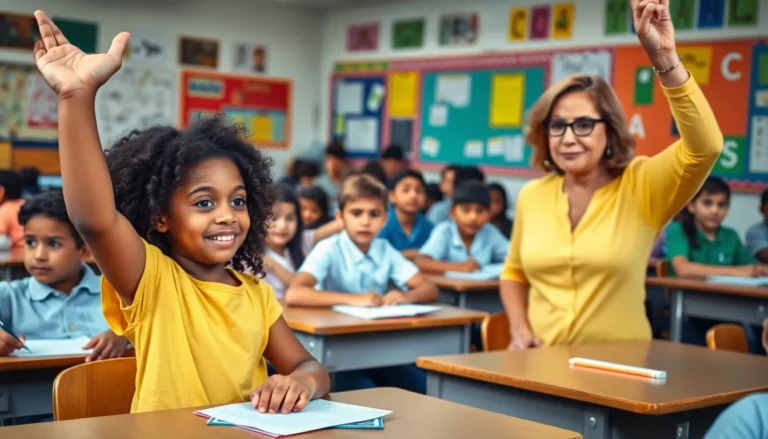Table of Contents
ToggleKids and consequences go together like peanut butter and jelly, but let’s face it—most kids would rather stick their hands in the cookie jar than face the music. From minor mischief to major mishaps, understanding the consequences of their actions is crucial for their growth. After all, if they don’t learn that throwing toys can lead to broken windows, they might just end up with a new career in home repairs.
But consequences aren’t just about punishment; they’re valuable life lessons wrapped in a fun-sized package. When kids grasp the cause-and-effect relationship, they develop responsibility and empathy. So buckle up as we explore the wild world of consequences for kids—where learning can be just as entertaining as a Saturday morning cartoon, and every mistake is a stepping stone toward becoming a responsible adult.
Understanding Consequences for Kids
Teaching kids about consequences plays a key role in their development. Understanding these outcomes helps shape their decision-making skills.
Definition of Consequences
Consequences refer to the outcomes resulting from specific actions. They can be positive or negative, offering lessons that guide future behavior. Positive consequences encourage repetition of desired behaviors, such as receiving praise for completing homework. Negative consequences might involve restrictions, like losing privileges for misbehavior. Awareness of these outcomes is crucial for children as they learn to navigate various situations and understand the impact of their choices on themselves and others.
Importance of Teaching Consequences
Teaching consequences is vital for fostering accountability in children. When kids grasp the relationship between actions and outcomes, they develop better decision-making skills. Understanding consequences also nurtures empathy, as children start recognizing how their actions affect others. Building this awareness instills a sense of responsibility, preparing them for real-life challenges. Engaging in discussions about consequences helps reinforce their importance and encourages proactive behavior changes. Ultimately, knowing the potential outcomes empowers children to make informed choices, promoting their growth and independence.
Types of Consequences

Consequences can be categorized into two primary types: natural consequences and logical consequences. Each type plays a crucial role in helping children understand their actions and the resulting outcomes.
Natural Consequences
Natural consequences occur as a direct result of an action. These outcomes happen without any intervention and demonstrate real-life implications. For instance, if a child refuses to wear a jacket on a chilly day, they might feel cold. Experiencing this discomfort teaches them about personal choice and its effects. Another example involves a child not completing their homework; they might receive a poor grade. Such situations effectively highlight the importance of responsibility and encourage better decision-making in the future.
Logical Consequences
Logical consequences result from an adult’s intervention to provide meaningful outcomes based on a child’s behavior. Unlike natural consequences, these are more structured and often stem from specific actions. For example, if a child consistently interrupts others, they might lose the opportunity to speak during class discussions. This fosters an understanding of respect and consideration for others. Another scenario is when a child neglects their chores, leading to the loss of privileges such as screen time. These consequences impart lessons on accountability while supporting the development of essential social skills.
Positive Consequences
Positive consequences serve as essential tools in child development. When children experience rewarding outcomes for their actions, they learn to associate good behavior with recognition and approval.
Encouraging Good Behavior
Explicit praise encourages kids to repeat desired behaviors. For instance, complimenting a child for helping with chores motivates them to continue assisting. Children thrive on positive reinforcement, which builds their self-esteem and reinforces the value of their contributions. When they feel appreciated, they’re more likely to adopt similar behaviors in the future. Engagement in activities, such as sports or group projects, offers additional opportunities for positive feedback. Rewards like extra playtime or special treats further elevate their motivation and consistency in positive actions.
Reinforcing Positive Choices
Reinforcement of positive choices creates a foundation for responsible decision-making. Acknowledging small achievements, such as completing homework, instills a sense of accomplishment. This recognition teaches kids that good choices lead to satisfying outcomes. Additionally, developing routines and expectations helps children understand the benefits of adhering to guidelines. Conversations about successful decisions can illuminate patterns that they might replicate in different circumstances. Celebrating milestones, whether academic or personal, showcases the connection between smart choices and positive experiences. Establishing this link fosters a deeper understanding of the impact of their actions on themselves and their environment.
Negative Consequences
Negative consequences arise from children’s poor decisions, impacting their growth and development. These outcomes play a crucial role in teaching valuable lessons.
Impact of Poor Decisions
Poor choices lead to immediate repercussions that can affect children’s daily lives. Experiencing consequences, like losing privileges or facing social isolation, teaches accountability. Children learn that actions have results, fostering critical thinking for future decisions. Zero tolerance for constant misbehavior ensures they recognize the value of making better choices. Gaining an understanding of these impacts guides them in navigating life’s complexities.
Long-term Effects on Development
Long-term effects from negative consequences significantly shape children’s emotional and social development. Continuous exposure to adverse outcomes can decrease self-esteem and hinder social skills. Developing resilience becomes more challenging when kids face ongoing criticism and punishment rather than constructive feedback. Emotional health may suffer, resulting in anxiety or withdrawal for some children. Recognizing these patterns enables caregivers to implement strategies promoting healthier decision-making processes. Supporting kids through their learning experiences helps them cultivate empathy and responsibility for their actions.
Strategies for Parents
Effective strategies help parents guide their children in understanding consequences. These methods create an environment where kids learn accountability and responsibility.
Communication and Guidance
Open and honest communication lays the groundwork for teaching kids about consequences. Parents should express expectations clearly, avoiding ambiguity that can lead to confusion. Active listening plays a key role; children feel heard and understood when their concerns are valued. Engaging in conversations allows for discussions around past actions and possible outcomes. Using real-life examples can illustrate how decisions impact their lives and those around them. Regular check-ins enable parents to address concerns before they evolve into bigger issues. Reinforcing this guidance shapes a child’s decision-making process, cultivating empathy and insight.
Setting Clear Expectations
Establishing clear expectations sets the tone for behavior and responsibility. Parents should outline acceptable and unacceptable actions distinctly, ensuring children recognize boundaries. Visual reminders, such as charts or lists, can help reinforce these guidelines effectively. Parents might create specific rules for different situations—homework completion, social interactions, or screen time. Consistency reinforces these expectations, helping children internalize the importance of their choices. Discussing the potential consequences, both positive and negative, further empowers kids to make informed decisions. This clarity promotes self-discipline and accountability, fostering a sense of control over their actions while guiding them toward responsible behavior.
Understanding consequences is a vital part of a child’s development. By recognizing the outcomes of their actions children learn accountability empathy and responsibility. Positive consequences encourage good behavior while negative consequences provide critical lessons that shape decision-making skills.
Parents play a crucial role in this learning process through open communication and consistent expectations. Engaging children in discussions about their choices empowers them to understand the real-life implications of their actions. This foundation not only prepares them for future challenges but also fosters their growth into responsible and empathetic adults. Ultimately teaching kids about consequences is an investment in their lifelong journey of learning and personal development.







